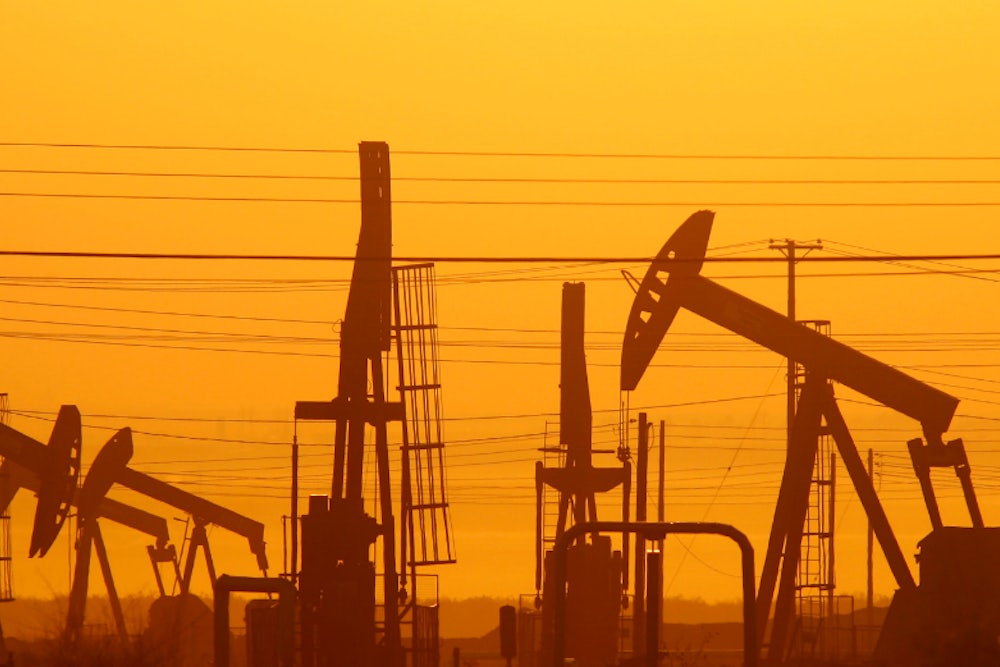Oklahoma had more earthquakes with over 3.0 magnitude this year than California—241 to 140, as of June. And in just 14 hours last weekend, Oklahoma registered three of a total seven quakes over that magnitude. Though a 3.0 quake is barely perceptible, the frequency should be concerning. In nature, smaller quakes can be a warning sign that larger, more severe ones are coming.
“If we look at the way natural earthquakes behave, the more smaller earthquakes you have, the more larger earthquakes you have,” Justin Rubinstein, a geophysicist for the U.S. Geological Survey (USGS), told me. “If these earthquakes behave the same, you might expect a larger earthquake.”
The question is whether these Oklahoma quakes are natural. Scientists increasingly believe that fracking by the oil and gas industry is triggering earthquakes in regions that otherwise should be relatively stable. Fracking itself isn't to blame, they say, but the large amount of wastewater produced in the process. In fracking, a well is drilled into shale rock deep underground and a slurry of water and chemicals is forced into the rock, fracturing it and freeing up the oil or gas within. But then something must be done with the contaminated water that returns to the surface. The treated water is disposed of in a second well—a "wastewater injection well"—which may trigger earthquakes by pressuring and lubricating faults. (Mother Jones has a good animation of how the process works.)
That’s not to say fracking wastewater always leads to earthquakes. According to Rubinstein, very few of the 35,000 wastewater injection sites nationwide end up causing earthquakes, and even fewer quakes can be felt. And yet, a handful of wells can be linked to entire regions of seismic activity. For example, a recent study from Cornell University researchers in Science magazine found that four “modern, very high-rate injection wells” were linked to earthquake activity near one Oklahoma town.
Here, a graph from USGS shows how the rate of earthquakes over 3.0 has increased in central and eastern U.S., particularly since 2010:

Most of these manmade earthquakes have been very small. But Oklahoma has seen an alarming number of minor quakes since its fracking boom—2014’s 207 quakes is already almost double 2013’s record of 109. In Ohio, which has seen a spike of earthquakes of its own, officials halted some fracking operations in order to investigate the connection, while Kansas and Texas have appointed commissions to study the link, too.
What hampers scientists’ ability to “imagine scenarios” and highlight risky areas, Rubinstein said, is the fact that there's no real-time industry data on the amount and pressure of water being injected underground. The American Petroleum Institute doesn't even dispute that fracking can be linked to earthquakes, but it also maintains that manmade quakes are "extremely rare" and can't cause any damage. Both of those claims are debatable. After all, Oklahoma experienced its largest earthquake ever recorded, 5.6 magnitude, in 2011. That could just be a preview of what's to come.
